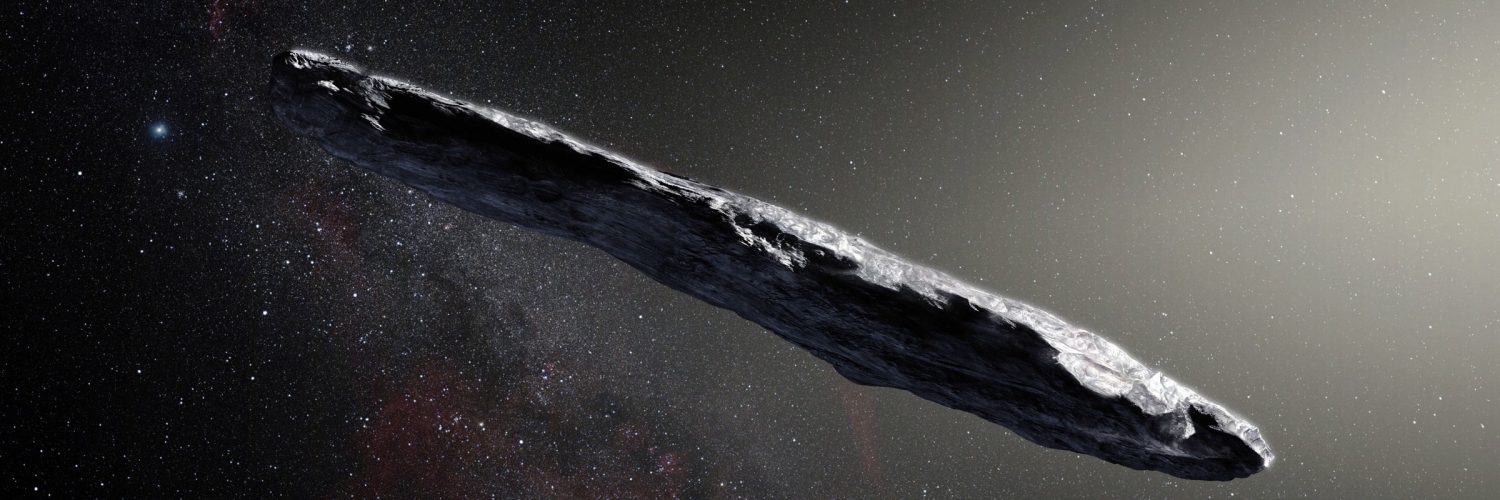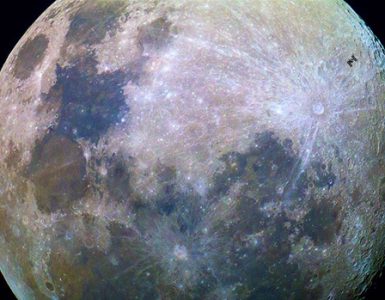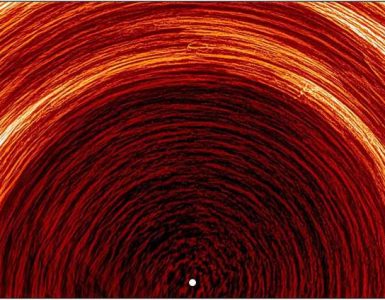by Laurenzo Overee
1I/2017 U1, codenamed Oumuamua, is one tiny space anomaly.
The eccentric object was first spotted by a team of scientists led by physicist Robert Weryk using the Pan-Starrs1 Telescope at the Haleakala Observatory in Hawaii back in 2017. The term Oumuamua is loosely translated as ‘scout’ or ‘messenger’ in the Hawaiian language, a reference to its identity as an ‘extrasolar visitor’.
The amazing thing about Oumuamua is that it sets records as being the first observed interstellar object to enter the solar system, an unprecedented event that has sparked speculations on the possibilities of extraterrestrial visitations.
Comet, asteroid, or something entirely different–experts have tried putting the pieces together towards unraveling its enigmatic origins.
Identity Crisis: Conventional
The traveling rock, which measures about 2,600 feet long and 260 feet wide, seems to move at a relatively fast pace. According to a Nature journal report, the body’s movement is non-gravitational. This means that Oumuamua is not pulled along by the gravity of the Sun or any similar solar body.
Some experts began to believe that Oumuamua is a comet rather than an asteroid and was exhibiting a propulsion process known as outgassing, a common trait observed in comets. However, debates continued, with some scientists stating that Oumuamua would have crumbled if it was a comet passing close to the Sun.
Astrophysicist Dr.Roman Rafikov argued that Oumuamua is too rotationally stable to be considered a comet. The European Southern Observatory (ESO) took accurate physical measurements of the object with Chile’s Very Large Telescope (VLT) to identify Oumuamua as a 400-meter long asteroid.
The asteroid theory was further supported in a study published in the Nature International Journal of Science, led by astronomer Karen J. Meech. “[O]ur observations during the brief visit by the object to the inner Solar System reveal it to be asteroidal, with no hint of cometary activity despite an approach within 0.25 astronomical units of the Sun. Spectroscopic measurements show that the surface of the object is spectrally red, consistent with comets or organic-rich asteroids that reside within the Solar System.”
The interstellar asteroid is also believed to be unusually elongated based on the varying degrees of brightness reflected by its surface during its journey through space. Its atypical shape may have led to earlier confusions in its classification process.
Conflicting notions between both camps gradually led to a third proposed identity for Oumuamua: simply as an interstellar object. According to the theories proposed in a review by The Royal Society, Oumuamua fits the description of a transition or continuum object, small system bodies which exhibit the traits of both asteroids and comets through a continuous series of observational and dynamical properties.
Identity Crisis: Unconventional
There are also less conventional theories.
Avi Loeb, leader of Harvard’s astronomy department believes that Ouamuamua is an interstellar space probe. Through a letter co-written with postdoctoral fellow Shmuel Bialy, Loeb had addressed his fascination with the subject.
One key characteristic of Ouamuamua piqued his interest: the object was observed to exhibit a sudden burst of speed as it zoomed past the Sun. The acceleration without a spin factor (that would have caused the rock to splinter in the case of typical comet outgassing), coupled with prior studies of its non-gravitational motion, has driven experts like Loeb to consider other distant possibilities.
Loeb initially thought that the rock could function like a lightsail, a physical plane pushed along by the photons of sunlight that bounce off its surface. Unfortunately, for that theory to hold true, Oumuamua would have to be extremely thin and wide, which is not the case for the object.
Loeb decided to go one step further by proposing the concept of an alien probe fueled with advanced terrestrial technology. The Harvard physicist theorized that the probe was deliberately deployed in the solar system. He also believes that the artificers of Oumuamua came from a destroyed civilization that originated within the Milky Way galaxy.
In a recent interview conducted by Isreali news, Haaretz, Loeb remained resolute on his theory. “We have no way of knowing whether it’s active technology, or a spaceship that is no longer operative and is continuing to float in space, but if Oumuamua was created together with a whole population of similar objects that were launched randomly, the fact that we discovered it means that its creators launched a quadrillion probes like it to every star in the Milky Way.’’
However, veteran NASA astronomer Dr. Zdenek Sekanina believes in an entirely different theory, as reported in his latest study: Oumuamua is not a solid physical object but rather, a gritty aggregate – the result of an explosive event in space.
Dr Sekanina described these remnant fragments as, “a devolatilized aggregate of loosely-bound dust grains that may have exotic shape, peculiar rotational properties, and extremely high porosity, all acquired in the course of the disintegration event.” The space expert went on to illustrate his point by means of comparison between two similarly observed events in the Oort Cloud, C/2017 S3 and C/2010 X1. Both comets had disintegrated when they reached perihelion and, similarly to Oumuamua, their resultant aggregate dust did not exhibit outgassing while being subjected to solar pressure.
The Significance
Ouamuamua has remained a mystery since its initial sighting in 2017. The most interesting thing about the objectis perhaps the expansive discussions and theories that have been left behind in its wake.
Although Oumuamua has left the solar system, continuing its lone voyage toward the Oort Cloud and beyond, it may have provided a rare glimpse of elements and structures from distant space systems. Oumuamua is most likely not the first—nor the last—mysterious interstellar object to cross through our Solar System. Existing technologies have not provided scientists with the capabilities of understanding or correctly identifying these objects, yet it’s possible near-future equipment will.
The upcoming Large-Scale Synoptic Telescope project that is scheduled for operation in 2022 will allow unprecedented detection of incoming interstellar objects. The breakthrough technology will revolutionize time domain astrophysics through imaging of the entire night sky in greater depth and at the highest quality, resulting in new perspectives into the observable universe. The project is set to measure objects in space between ten to hundred-fold of modern telescope functions. “When LSST comes online, we will have the opportunity to observe something up close that formed around another star, without having to leave the solar system,” stated Yale astrophysicist, Darryl Seligman.
Oumuamua may have come as a surprise but the scientific community on Earth stands better prepared in facing its next cosmic visitor.






Add comment